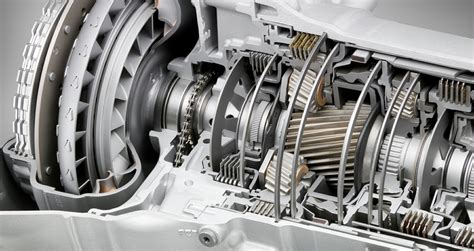How Heavy Is A Gearbox
Ronan Farrow
Apr 04, 2025 · 3 min read

Table of Contents
How Heavy is a Gearbox? A Comprehensive Guide to Gearbox Weight
The weight of a gearbox is a crucial factor in various applications, from automotive engineering to industrial machinery. It significantly impacts design considerations, transportation, and overall system performance. However, there's no single answer to the question "How heavy is a gearbox?" because the weight varies drastically depending on several factors. This comprehensive guide will explore these factors and provide you with a better understanding of gearbox weight.
Factors Determining Gearbox Weight
Several key factors contribute to the overall weight of a gearbox:
1. Gearbox Size and Type:
- Size: Larger gearboxes, designed to handle higher torques and speeds, naturally weigh more than smaller units. This is simply due to the increased volume of materials used in their construction.
- Type: Different gearbox types, such as planetary gearboxes, helical gearboxes, worm gearboxes, and bevel gearboxes, have varying designs and material requirements. Planetary gearboxes, known for their compact design and high torque capacity, might be heavier than a similarly sized helical gearbox due to the arrangement of their internal components.
2. Material:
The materials used to manufacture the gearbox components significantly influence the overall weight.
- Cast iron: A common choice for its strength and rigidity, contributing to a heavier gearbox.
- Aluminum alloys: Lighter than cast iron, these alloys are often preferred where weight reduction is crucial, although they might sacrifice some strength.
- Steel: Various grades of steel are used, each with different strength and weight characteristics. High-strength steel allows for smaller and lighter components for the same load capacity.
3. Gear Ratio:
A gearbox's gear ratio influences the size and complexity of its internal components. Higher gear ratios often require more gears and larger shafts, leading to increased weight.
4. Manufacturing Techniques:
Advanced manufacturing techniques can optimize the design and material usage, leading to lighter gearboxes without compromising strength and performance. Forging, for example, can create stronger and lighter components compared to traditional casting.
5. Additional Features:
Features like integrated motors, encoders, or lubrication systems add to the overall weight of the gearbox.
Estimating Gearbox Weight: A Practical Approach
While providing a precise weight without knowing the specific gearbox model is impossible, here's a practical approach:
- Consult the Manufacturer's Specifications: The most reliable method is to check the manufacturer's datasheet or catalog. These documents usually provide the weight of the gearbox.
- Use Online Resources: Online databases and industrial equipment catalogs can offer weight ranges for similar gearbox types and sizes. Use these as rough estimates.
- Consider Similar Gearboxes: If you have the dimensions and material of a similar gearbox, you can estimate the weight based on the density of the materials used. Keep in mind that this is an approximation.
Conclusion: Understanding Gearbox Weight for Optimal Application
The weight of a gearbox is a crucial design parameter. By understanding the factors influencing its weight, you can make informed decisions during the selection and application process. Always consult the manufacturer's specifications for precise weight information to ensure compatibility and proper system performance. Remember that accurate weight data is essential for successful integration and operation of any gearbox within a larger mechanical system.
Featured Posts
Also read the following articles
| Article Title | Date |
|---|---|
| How Does Wall Mounted Ac Work | Apr 04, 2025 |
| How Does Auto 4wd Work On Silverado | Apr 04, 2025 |
| How Do Boxing Gyms Work | Apr 04, 2025 |
| How Far Away Can A Buck Smell Doe Urine | Apr 04, 2025 |
| How Do Wading Boots Work | Apr 04, 2025 |
Latest Posts
-
How Invisalign Moves Teeth
Apr 04, 2025
-
How I Seduced My Dad
Apr 04, 2025
-
How I Quit Ketamine
Apr 04, 2025
-
How I Learned To Drive Review
Apr 04, 2025
-
How I Became A Pirate Activities
Apr 04, 2025
Thank you for visiting our website which covers about How Heavy Is A Gearbox . We hope the information provided has been useful to you. Feel free to contact us if you have any questions or need further assistance. See you next time and don't miss to bookmark.
